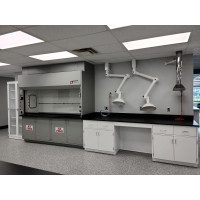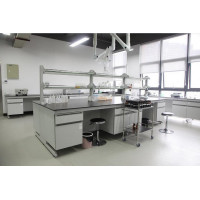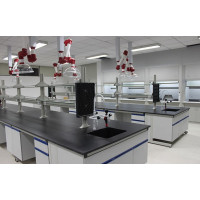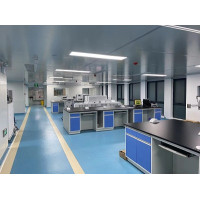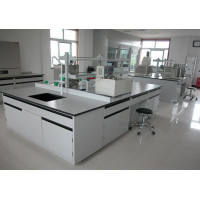一、环境监测实验室选址
选址要求:
1. 避免污染源:环境监测实验室建设的首要选址原则是远离污染源。污染源包括工厂、垃圾处理场、主要交通干道等。这些地方会产生大量的污染物,如废气、废水和噪音,可能会干扰实验结果的准确性。因此,环境监测实验室要选择远离这些污染源的地点,以确保实验数据的真实性和可靠性。
2. 交通便利:实验室的选址还有考虑到交通的便利性。便捷的交通不仅可以提高人员通勤的效率,还能方便样品的运输和设备的进出。交通便利的选址能够有效减少运输时间,降低样品在运输过程中受污染的风险。
3. 水电供应稳定:环境监测实验室的运行离不开稳定的水电供应。实验室中的许多仪器设备对电力供应有着较高的要求,电力不稳定会导致仪器设备的损坏或数据的丢失。此外,水资源的供应也必须充足,以满足实验室日常清洗和实验用水的需求。因此,在环境监测实验室建设选址时需确保当地有稳定的水电供应。
二、环境监测实验室布局设计
布局设计:
1. 平面布局:环境监测实验室的平面布局应考虑到不同类型实验室的分类,例如常规实验室、无机实验室、有机实验室和生物实验室等。每种实验室需要独立的空间,以避免交叉污染。此外,还需合理划分实验室和办公室的区域,确保工作人员有足够的办公空间和休息区域。
2. 功能分区:实验室内部应设立明确的功能分区,包括样品接收区、样品处理区、分析测试区、数据处理区和办公区等。
3. 物流通道:合理的物流通道设计是确保样品在环境监测实验室内流动顺畅和避免交叉污染的重要环节。样品在实验室内的流动路径应尽可能简洁、直接,避免在不同功能区域之间频繁穿插。同时,应设置独立的样品进出口通道,确保样品在进入和离开实验室时不会受到污染。
4. 通风与排气系统:实验室内会产生大量的有害气体和化学废弃物,因此为环境监测实验室设计合理的通风和排气系统至关重要。通风系统要能确保实验室内空气流通顺畅,防止有害气体积聚。同时,排气系统需能够有效排出有害气体,保持实验室空气质量,保障工作人员的健康和安全。
三、环境监测实验室设备配置
1. 高效液相色谱仪(HPLC):用于分离、鉴定和定量分析混合物中的各组分。HPLC在环境监测中广泛应用于检测有机污染物。
2. 气相色谱仪(GC):用于挥发性和半挥发性化合物的分析。GC常用于分析空气、水和土壤中的有机污染物。
3. 原子吸收分光光度计(AAS):用于测定金属元素的含量。AAS在环境监测中主要用于检测水和土壤中的重金属。
4. 紫外可见分光光度计(UV-VIS):用于定量分析溶液中的化学物质。UV-VIS广泛应用于检测水质中的各类有机和无机污染物。
环境监测实验室辅助设备:
1. 天平:用于精确称量样品和试剂。
2. 烘箱:用于样品的干燥和加热处理。
3. 冰箱:用于储存需低温保存的样品和试剂。
4. 显微镜:用于观察样品的微观结构。
环境监测实验室环境控制设备:
1. 温湿度控制器:用于控制实验室内的温度和湿度,确保实验环境的稳定。
2. 空调:用于调节实验室的温度,提供舒适的工作环境。
3. 除湿机:用于控制实验室内的湿度,防止样品受潮。
环境监测实验室安全设备:
1. 洗眼器:用于紧急情况下清洗眼部的化学物质。
2. 急救箱:配备基本的急救用品,以备不时之需。
3. 防护服:提供给实验人员,确保其在操作过程中不受化学物质的伤害。
4. 消防设备:包括灭火器、消防栓等,确保在火灾发生时能够及时扑灭火源。
四、环境监测实验室建设施工
在环境监测实验室建设施工过程中,要严格按照环境监测实验室设计图纸进行施工,确保每个环节都符合设计要求。具体步骤包括:
1. 基础施工:包括地基处理、主体结构施工等。需确保实验室的结构稳固,能够承受设备的重量和日常使用的负荷。
2. 水电安装:包括电力系统、给排水系统的安装。需确保电力系统能够满足所有设备的用电需求,给排水系统能够正常运作,避免漏水和断水情况的发生。
3. 通风系统安装:确保通风系统的管道铺设合理,能够有效排出实验过程中产生的有害气体。
4. 特殊房间施工:如冷藏间、无菌室等的建设需特别注意,确保其具备相应的功能和条件。
5. 设备安装:包括基本设备、辅助设备、环境控制设备和安全设备的安装。需确保设备安装位置合理,连接稳固,能够正常运行。
五、环境监测实验室验收
验收环节是确保环境监测实验室建设质量的重要步骤,包括以下几个方面:
1. 结构验收:检查建筑结构是否符合环境监测实验室设计要求,是否存在安全隐患。
2. 设备验收:检查仪器设备是否安装正确,能否正常运行,是否达到预期的技术指标。
3. 功验收:验证各功能区域是否能正常使用,通风与排气系统是否有效,水电系统是否正常运作。
4. 安全验收:检查安全设施是否齐全有效,紧急预案是否到位,确保实验室具备处理突发情况的能力。
5. 环境验收:确保实验室内部环境符合标准,避免污染,确保实验数据的准确性和可靠性。
环境监测实验室设计建设不仅是一项科学技术的挑战,更是一项服务于环境保护事业的责任。只有不断优化设计、提升管理水平,才能建设出更加完善、更具竞争力的环境监测实验室,为保护地球家园作出更大的贡献。
中壹联实验室致力于为客户提供各种实验室设计,实验室装修,实验室建设,实验室家具定制设计服务,无论您选择哪种服务,中壹联实验室将全程为您提供服务您的实验室需求。
http://www. zyllt. cn
购买产品请联系发布者,如果需要产品发布、出口退税、货物报关清关代理请联系平台服务: admin@b2bgood. com


